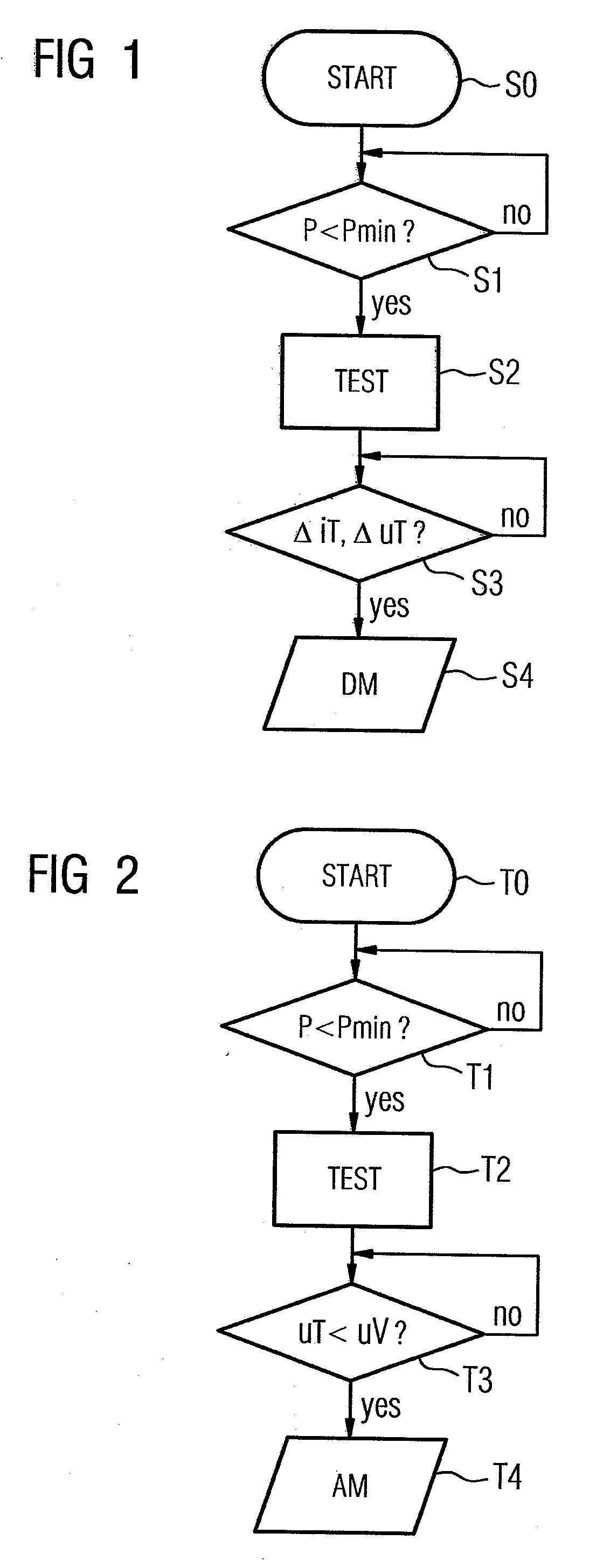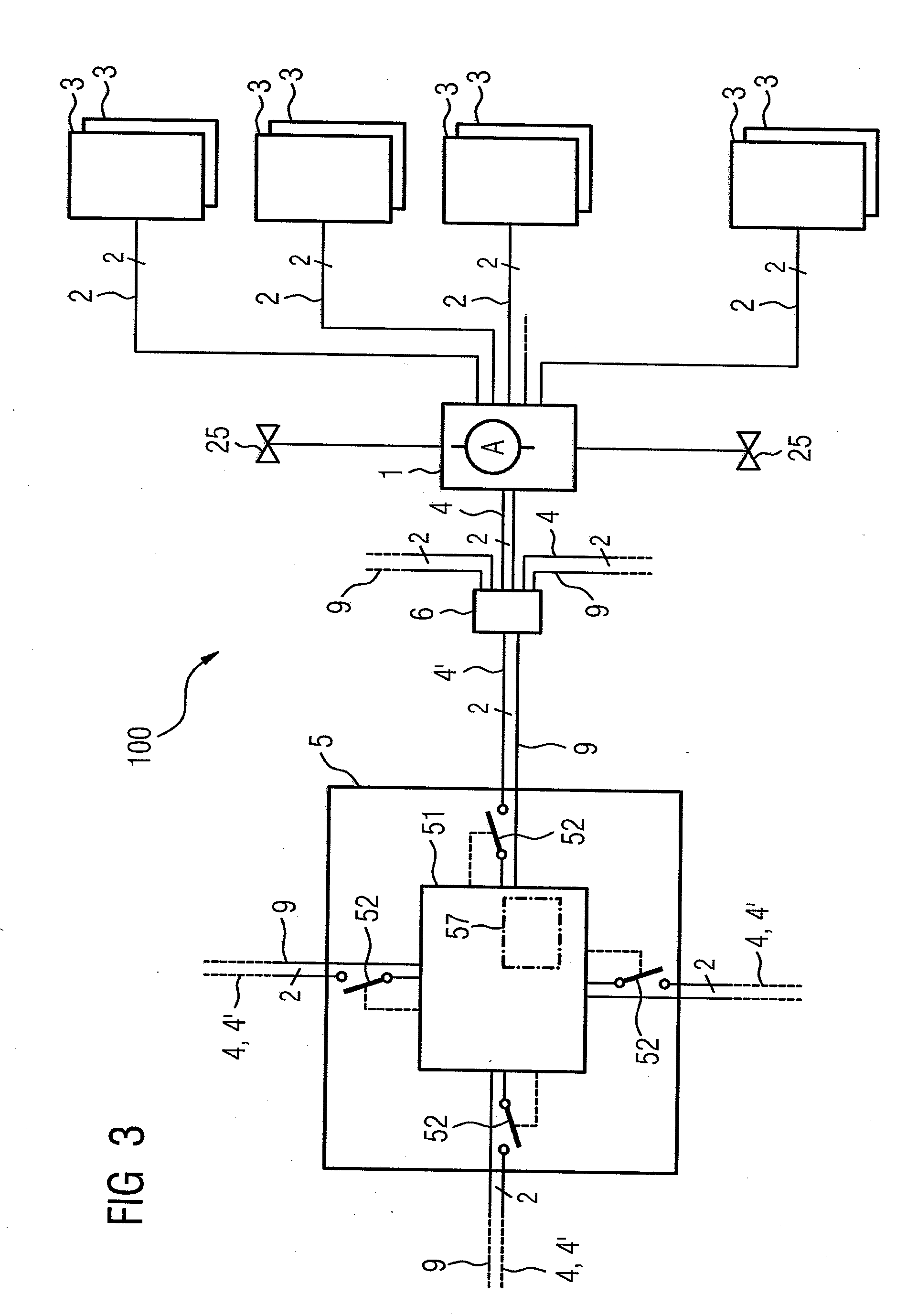Method for Recognizing Theft of a PV Module and a Failure of a Bypass Diode of a PV Module, Corresponding PV Sub-Generator Junction Box, PV Inverter, and Corresponding PV System
a technology of pv module and bypass diode, which is applied in the field of recognizing theft of pv module and failure of pv module, and corresponding pv sub-generator junction box, pv inverter, and corresponding pv system, can solve the problems of high risk of theft of such extensive pv system, high cost of system, and increased theft rate. , to achieve the effect of simple and simpl
- Summary
- Abstract
- Description
- Claims
- Application Information
AI Technical Summary
Benefits of technology
Problems solved by technology
Method used
Image
Examples
Embodiment Construction
[0059]FIG. 1 is an illustration of a flowchart of a method for recognizing a theft. S0 designates a start step. A query is made in the following step S1 as to whether feeding operation is presently occurring in the PV system 100. To this end, a comparison is performed of the present electrical feed-in power P with a minimum feed-in power Pmin for which the operation of the power module of the PV inverter remains economical. If this is the case, a branch back to step S1 occurs. Otherwise, in step S2 denoted by “TEST”, i.e., during non-feeding operation i.e., in the evening and at night, a test voltage that is negative relative to the field voltage uT is connected to the at least one PV string line to set a test current iT through the bypass diodes. In the following step S3, a check is made to determine whether the test current iT changes significantly at a given test voltage uT or the test voltage uT changes significantly at a given test current iT. If no change is ascertained, a bra...
PUM
 Login to View More
Login to View More Abstract
Description
Claims
Application Information
 Login to View More
Login to View More - R&D
- Intellectual Property
- Life Sciences
- Materials
- Tech Scout
- Unparalleled Data Quality
- Higher Quality Content
- 60% Fewer Hallucinations
Browse by: Latest US Patents, China's latest patents, Technical Efficacy Thesaurus, Application Domain, Technology Topic, Popular Technical Reports.
© 2025 PatSnap. All rights reserved.Legal|Privacy policy|Modern Slavery Act Transparency Statement|Sitemap|About US| Contact US: help@patsnap.com



